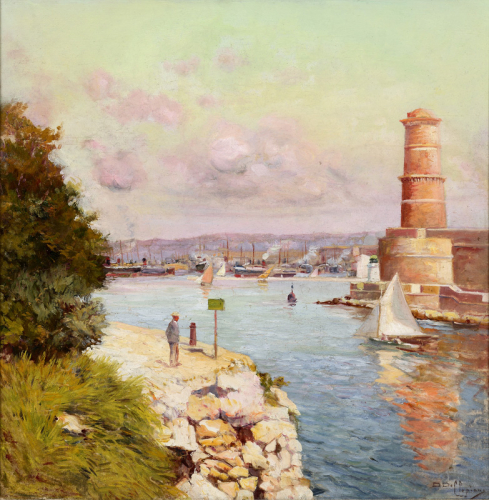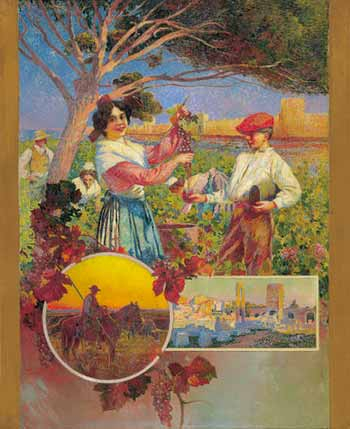
The painter David DELLEPIANE - Arts and Modernity
David Dellepiane, a surprising Provencal artist
Exhibition at the Regards de Provence Museum from October 7 to March 19, 2016 The family of painter David Dellepiane, originally from Genoa, settled in Marseille in 1875, in the Saint-Jean district, which then welcomed most immigrants. The young man, from a line of craftsmen, is taught at the city's School of Fine Arts. He then completed his training for a while in Paris where, at the turn of the century, he attended the studio of Jules Chéret. Influenced by Art Nouveau aesthetics and Japonism, he borrows from them an original interpretation of the layout and framing, which he will implement in particular in the many advertising projects for which he is responsible, after his brilliant realization for the holidays. commemorations of the 25th centenary of the founding of Marseille, whose poster embodying the myth of Gyptis and Protis, abundantly plastered on the walls of the city, marks the memory of the people of Marseille for several generations. Dellepiane will subsequently be responsible for producing the posters for the Colonial Exhibitions of 1906 and 1922, promoting the links of shipping companies from Marseille, the PLM railway line, the emerging tourist associations ...
Initially academic, Dellepiane's painting continues to evolve. It is not particularly a chronological, linear and well-established evolution, but rather the result of experiments, which allow him to integrate into his work, according to his inspirations, techniques that are in the air. of time and that it appropriates without difficulty.
With his friend Alfred Casile, he painted on the motif, following the painters of the School of Marseille trained by Loubon. But he very quickly distinguished himself by his eclecticism, the bulimia of the sources that hold him back, the diversity of currents that run through his work. The painter, for example, allows himself to be seduced by the pointillist rendering, which he adapts in a vibrant touch that gives his compositions a kind of blur, accentuating the distancing of the subject.
At Christmas 1914, he had a revelation, and made the crib santon the, if not exclusive, at least continuous motif of formal research which would occupy him until his death in 1932. Behind the choice of this object of study that we have readily associated with Provençal folklore and nostalgia for Félibres, in reality hides a resolutely modern concern: the very personal quest of an artist towards a form of abstraction of the subject, the modalities of which, long misunderstood , are particularly interesting.
Dellepiane on display at the Regards Museum in Provence
One foot in tradition, the other in experimentation, Dellepiane is a unique Provencal. On the borderline of the decorative arts, his work, protean, is nevertheless of great coherence and equal sensitivity.
This exhibition offers to discover it from a new angle: Dellepiane is no more the poster artist of colonial Marseille than the painter of santons. No more the calendar illustrator than the decorator, nor the social portrait painter. He is just himself, that is, all of this at the same time.
Canvases, watercolors, projects and posters, nearly a hundred works, mostly from private collections, thus help to reconstruct the journey of a sincere art adventurer, deeply attached to Marseille and Provence.

